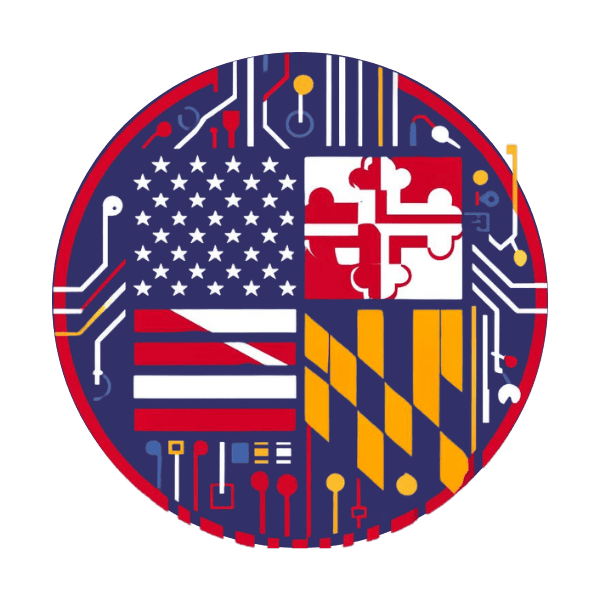Modern AI Development Stack


The landscape of AI programming has evolved significantly beyond basic Python implementations. Today's AI engineers need to master a complex ecosystem of frameworks and tools designed for high-performance computing and production-grade AI systems.
High-Performance Computing Frameworks
JAX: Next-Generation Machine Learning
JAX has emerged as a powerful tool for high-performance machine learning, offering:
Key Features and Applications
- Automatic differentiation through native Python code
- Just-In-Time (JIT) compilation for GPU/TPU acceleration
- Vectorization (vmap) for parallel processing
- Static Graph Optimization
- Function transformations for research and experimentation
Implementation Scenarios
- Research environments requiring rapid iteration
- High-performance numerical computing
- Large-scale machine learning model training
- Scientific computing applications
- Reinforcement learning systems
PyTorch 2.0 and TorchDynamo
PyTorch 2.0 represents a significant evolution in deep learning frameworks:
Core Capabilities
- Dynamic graph compilation for faster execution
- Improved memory efficiency through better memory management
- Enhanced distributed training capabilities
- Native device-specific optimizations
- Seamless integration with Python ecosystems
Advanced Features
- TorchDynamo for automatic optimization
- Better integration with accelerated hardware
- Enhanced debugging capabilities
- Improved model serving capabilities
- Streamlined deployment workflows
Production Systems and Rust Integration
Rust in AI Systems
The adoption of Rust for production AI systems brings several advantages:
Key Benefits
- Memory safety without garbage collection
- Predictable performance characteristics
- Easy integration with existing systems
- Strong concurrency support
- Excellent tooling and package management
Implementation Areas
- High-performance inference servers
- Real-time AI systems
- Edge device deployment
- System-level AI infrastructure
- Safety-critical AI applications
Integration Patterns
- FFI (Foreign Function Interface) with Python
- WebAssembly deployment for browser-based AI
- Microservices architecture for AI systems
- Hardware-accelerated computing interfaces
- Cross-platform deployment solutions
Graph Neural Networks (GNN) Frameworks
Modern GNN Development
The growing importance of graph-based AI requires expertise in specialized frameworks:
Popular Frameworks
- PyTorch Geometric (PyG)
- Deep Graph Library (DGL)
- Spektral for Keras
- GraphNets by DeepMind
- TensorFlow Graphics
Key Applications
- Social network analysis
- Molecular structure prediction
- Recommendation systems
- Traffic prediction
- Knowledge graph processing
Distributed Computing for AI
Distributed Training Frameworks
Modern AI requires efficient distributed computing solutions:
Framework Options
- Horovod for distributed training
- Ray for distributed AI applications
- Dask for parallel computing
- PyTorch Distributed
- TensorFlow Distribution Strategy
Implementation Considerations
- Data parallelism strategies
- Model parallelism approaches
- Communication optimization
- Fault tolerance mechanisms
- Resource allocation and scheduling
Hardware Acceleration Programming
CUDA Programming for NVIDIA GPUs
Maximizing GPU performance requires deep CUDA expertise:
Essential Skills
- CUDA kernel optimization
- Memory hierarchy management
- Stream processing
- Asynchronous operations
- Multi-GPU programming
Performance Optimization
- Thread coalescing
- Shared memory utilization
- Bank conflict prevention
- Warp-level programming
- Dynamic parallelism
ROCm for AMD GPUs
AMD's ROCm platform offers an alternative for GPU acceleration:
Key Components
- HIP programming model
- ROCm Math Libraries
- Deep learning optimizations
- Performance profiling tools
- Multi-GPU support
Career Trajectories and Specializations
Technical Specializations
- AI Infrastructure Engineer
- Performance Optimization Specialist
- Research Engineer
- Systems AI Engineer
- Hardware Acceleration Engineer
Industry Roles
- AI Framework Developer
- Technical AI Architect
- AI Platform Engineer
- Research Scientist
- AI Systems Reliability Engineer
Skill Development Strategy
Foundation Building
- Master Python and core ML concepts
- Learn fundamental parallel programming
- Understand computer architecture
- Study algorithmic optimization
- Practice system design principles
Advanced Development
- Implement custom CUDA kernels
- Build distributed training systems
- Develop GNN applications
- Create production-grade AI services
- Optimize for specific hardware platforms
Future Trends and Preparations
Emerging Areas
- Quantum computing integration
- Neuromorphic hardware support
- Edge AI optimization
- AI-specific hardware acceleration
- Cross-platform deployment solutions
Continuous Learning
- Stay updated with framework releases
- Experiment with new hardware platforms
- Participate in open-source projects
- Attend technical conferences
- Engage with research communities
Best Practices and Guidelines
Development Workflow
- Version control for AI code
- Automated testing for AI systems
- Performance benchmarking
- Documentation standards
- Code review processes
Production Considerations
- Monitoring and observability
- Error handling and recovery
- Resource optimization
- Security implementation
- Deployment automation
The mastery of these frameworks and tools opens up significant career opportunities in AI development, particularly in roles focusing on system optimization and research engineering. The key to success lies in maintaining a balance between depth of expertise in specific tools and breadth of knowledge across the AI technology stack.

